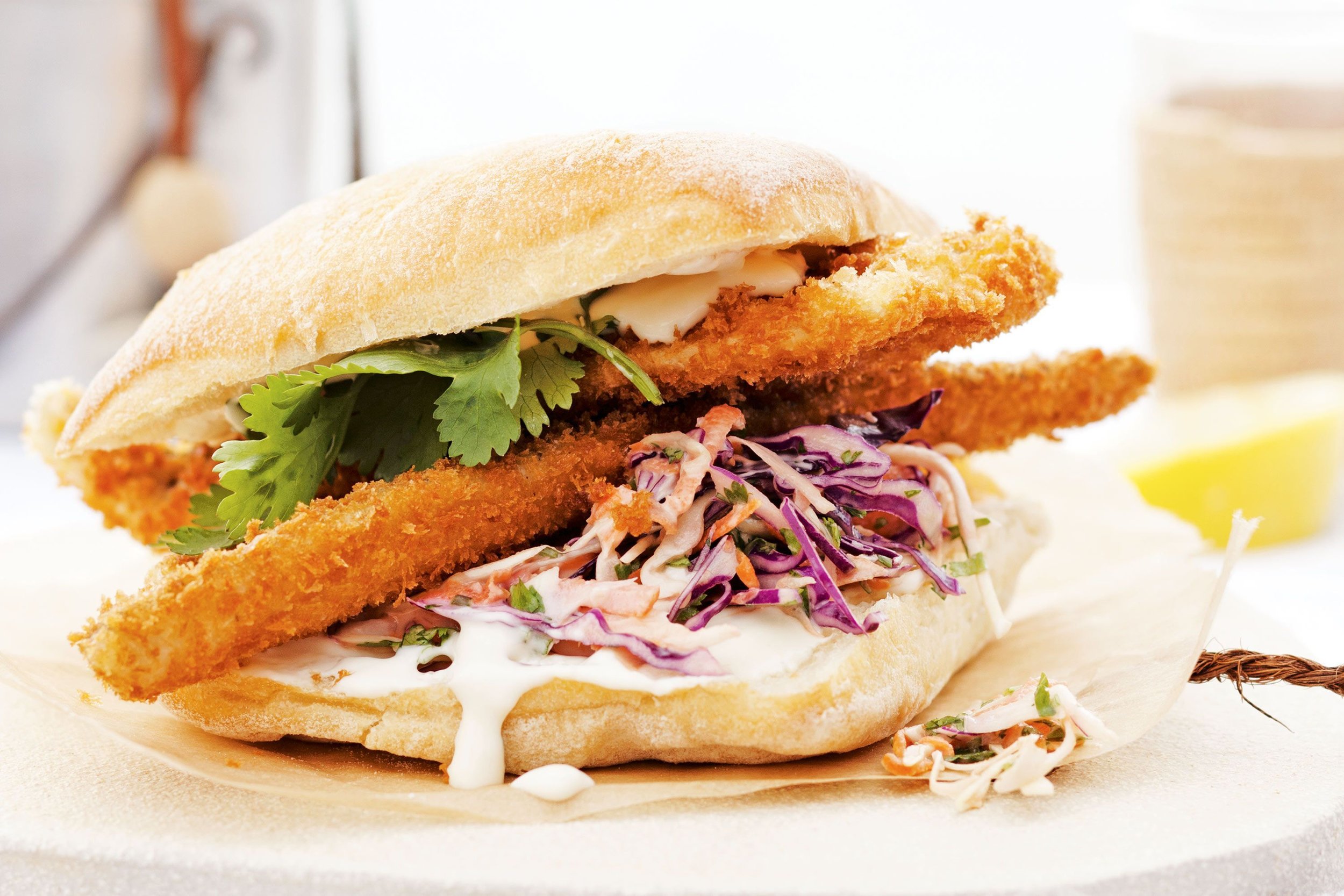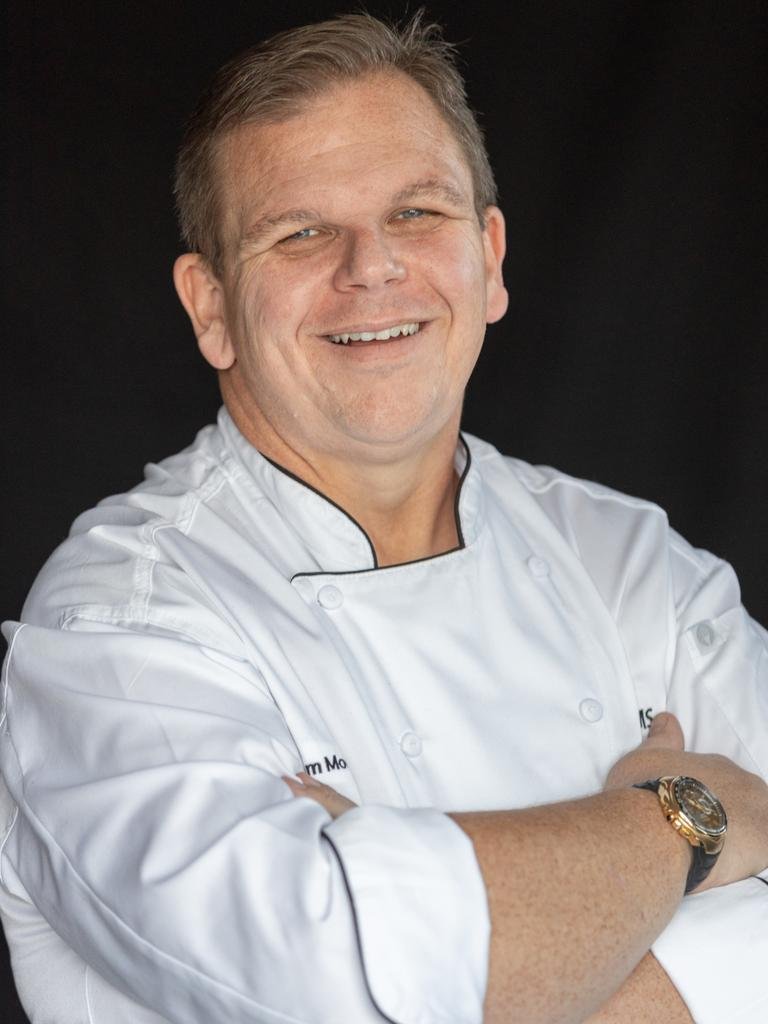Burgers still on the rise as chefs continue to innovate
/There seems to be no stopping the rise of the once-humble burger. No longer relegated to the staple of the ‘greasy spoon’ takeaway, today burgers have hit gourmet status and become a must-have on menus across the spectrum of foodservice. And the innovation is set to continue as chefs get more and more creative with their burger builds and choice of toppings. We spoke to several to get a taste of the latest trends.
PETER WRIGHT
“I think there’s been a transition in burgers over the past couple of years,” says consultant chef Peter Wright, “in that the quality of the meat has increasingly become the focus. Today we see better burger patties than ever before – juicy, pure beef that’s simply seasoned with salt and pepper, quality chicken breast, great fish. It’s all about upping the game.
“Essentially it’s about creating something that will have a big flavour impact for the consumer”
“You also want to look at your choice of burger sauces and relishes – spicy Asian flavours are trending right now, as is chipotle mayo, sweet sriracha, chermoula, harissa, chilli – all these flavours are really distinctive, but at the same time you want to choose ones which are not overpowering. They should complement your protein but never overwhelm it. Essentially it’s about creating something that will have a big flavour impact for the consumer.”
With that in mind, Peter recommends adapting your burgers not only to your core demographic but also to match the way they are primarily eaten: “for example, are you selling burgers as a handheld takeaway snack, or a sit-down meal with chips? Because the garnish that goes with the sit-down burger is a great way of adding value and boosting your pricepoint. We’re currently seeing halloumi chips or sweet potato fries trending as add-ons and these are a fantastic complement to your dine-in burger meal.
“You need to ask yourself: what else can you serve with the burger to make it interesting, what can you stack it with so that as you walk past people to serve it they go, ‘wow, what’s that?’ You might be stacking it up with onion rings, beetroot, pineapple, egg, bacon – you need to look at what combos will go great with your protein choice.”
“We’re currently seeing halloumi chips or sweet potato fries trending as add-ons and these are a great complement”
Peter adds that the bun is also a key component of the burger.
“You need to ensure that when the customer picks the burger up, the bun can hold the weight of the ingredients and maintain the overall construction – nobody likes a burger that disintegrates as they eat it.
“So your choice of bun is of primary importance and there’s so many variations available right now – whether it’s gluten free, with or without seeds, beetroot or charcoal matcha buns, potato buns.
“And not only is the bun a critical part of the construction, it also adds to the eating value. You don’t want anything that’s too dense and hard that fills the customer up too much – instead it should be light and fluffy, just strong enough to hold all the ingredients together.”
Start with quality ingredients
Gary JOhnson
Chef Gary Johnson emphasizes that the key to a successful burger is to start off with quality ingredients: “You’ve got to have a great bun, and then the pattie – 150 to 200g with the right blend of meat, the right amount of fat – topside, maybe a little skirt, the right calibre of grind. All these are important components that go into making the burger.
“There are some boutique butchers who can do fantastic burger patties - getting that right is the only secret I can give you. Once you’re using quality meat with no binders or rubbish, cook it simply with olive oil, salt and pepper. A milk bun is a great choice for burgers because they have a beautifully soft texture.”
“Sauces like chipotle and barbecue are extremely popular, as are fillings like dill pickle and kimchi”
Gary adds that getting the ingredient textures and flavours right is equally important. “Sauces like chipotle and barbecue are extremely popular, as are fillings like dill pickle and kimchi.”
He emphasises that burgers needn’t be restricted to chicken and beef. “I know of a wonderful seafood burger built on a milk bun, with grilled Moreton Bay bug, coleslaw, truffle mayo, cos lettuce and pickled cucumber. It’s a fantastic meal.”
All about the add-ons
Adam Moore
Chef Adam Moore says, “Burgers today are all about the add-ons: the type of cheese, the pickles, whether you’ve souped them up with spicy relishes and sauces. They’re a great choice for the menu right now because they’re an easy grab and go meal and they’re also quite filling – you can take your customers on a gastronomy tour with flavours and textures even when they’re buying it to have at home.”
He says the key is to be adventurous with ingredients and not to be afraid of ‘hamming it up’: “Chefs are using not just one cheese but two or three to get a contrast of flavours, and the great textural appeal of the cheese melting down into the protein. They’re also using multiple patties – one pork, one beef – so customers can be taken on that full flavour adventure.
“Maybe flavour overload is going to be the next big thing in burgers”
“Sir Eats-A-Lot, who has been trending on Instagram for some time, is big on burgers – he showcases some amazing burgers that I’d call ‘frankenburgers’ because they’ve been put together from all kinds of ingredients and offer multiple layers of flavour. He’s replacing your regular cheese with blue cheese and spicy hot sauce and is busily promoting these, so maybe flavour overload is going to be the next big thing in burgers.”
Pair your burgers with sauces and dressings
Andrew Ballard
Andrew Ballard, Executive Chef at Unilever FoodSolutions, says one of the drivers for the ongoing popularity of burgers is the creativity of chefs in pairing them with a range of sauces and dressings. With this in mind, the Unilever FoodSolutions team has a range of World Cuisine sauces and relishes under the Knorr brand which are ideal for burgers. One of the most popular is Knorr American Chipotle BBQ, which Andrew describes as “a smokey barbecue flavour which is ideal for braising briskets, but can just as easily be used as a straight burger sauce. We also have Knorr American Tomato Chilli Relish, which is terrific for burgers and other meat-based dishes like steak sandwiches.”
Andrew makes the point that more and more, foodservice professionals are looking for ‘closer to scratch’ products made from high quality ingredients, and the Knorr range ticks the boxes in this regard. “The sauces in the range are designed to make it easy to add depth and flavour to your dishes quickly and easily – by using them as is, or as a base to which you can add other ingredients.
“A lot of higher end venues make their own burger sauces by mixing two of our Knorr sauces together with a product like our Hellmann’s Mayonnaise. This allows you to create your own bespoke sauce for your venue – 50 per cent mayonnaise and 25 per cent each of the Knorr products will give you a fantastic burger sauce.”
“We’re also now seeing liquid cheese and thick chipotle gravy being served for customers to dunk their burger into”
The latest addition to the range, launched last month at Fine Food Australia, is Hellmann’s plant-based aioli, which is a certified vegan product. “This makes a superb base for all your burger sauces and obviously it can also fit on any plant-based or vegan options as well,” Andrew emphasises. “There’s no compromise on flavour, texture and consistency – it’s similar if not better in flavour than standard aioli.
“The options to add to it are endless – chilli, sriracha, Tabasco – you could serve up a buttermilk chicken burger, add some sriracha to our aioli and that will impart a wonderful spiciness. Another cool burger sauce is to add mustard, pickle juice, liquid smoke and sriracha and that will take your burger game to the next level. And of course these are also perfect as a dipping sauce for a cheeseburger, spring roll or any sort of fried food as well.”
Andrew cites birria burgers, which have recently evolved from birria tacos, as the latest innovation on the burger front.
Birria is a traditional Mexican marinade made with vinegar, chilli, garlic and other herbs, and it’s now being served as a dipping sauce for burgers as well as marinade for the burger pattie itself.
“We’re also now seeing liquid cheese and thick chipotle gravy being served for customers to dunk their burger into. The other trend that’s really on the rise is burger hybrids or mashups – that is, creating burger-inspired versions of other menu items. Smashed burger tacos is a great example, where chefs are adding the ingredients of a smashed burger pattie into a taco, then serving it with a dipping sauce.”













